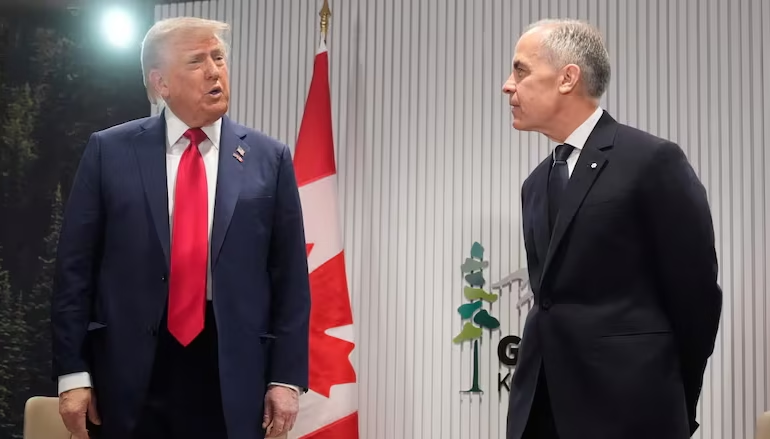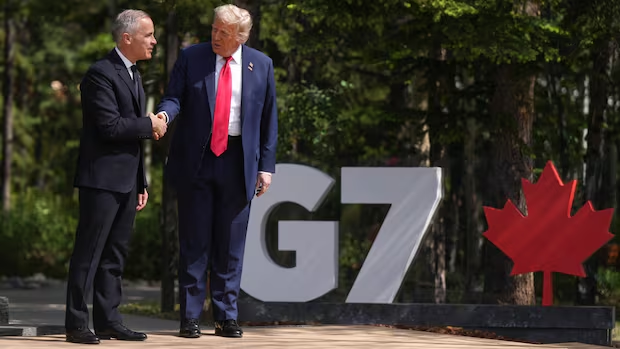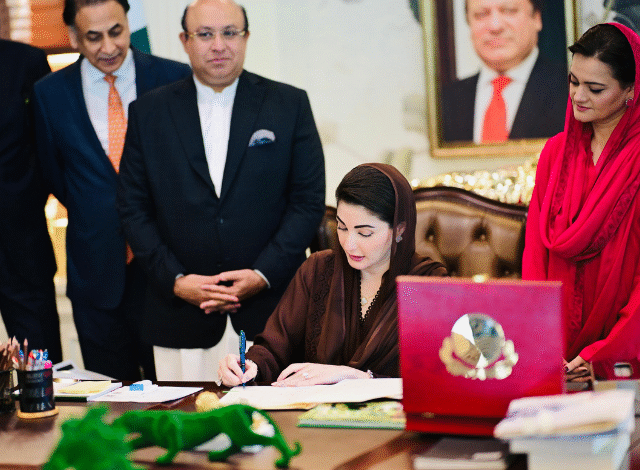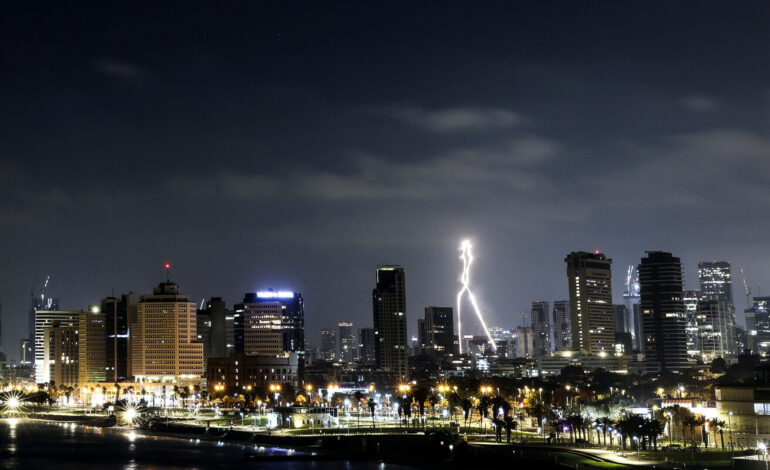
Carney and Trump pledge to reach trade deal within 30 days.
Trump says he wants to ‘get to the bottom’ of a new Canada-US trade deal during the G7 meeting.
Prime Minister Mark Carney and U.S. President Donald Trump are putting a deadline on ironing out bilateral trade irritants and getting some sort of deal on tariffs: 30 days.
The Prime Minister’s Office said the two leaders met on the sidelines of the G7 summit in Kananaskis, Alta., and agreed the trade talks need to be sped up with a goal of reaching a deal sometime over the next month — the first time either side has put a definitive timeline on reaching a deal to bring this months-long trade war that has been disruptive to economies on both sides of the 49th parallel to a close.
U.S. President Donald Trump sounded an optimistic tone as he met with Prime Minister Mark Carney Monday on the sidelines of the G7 summit in Kananaskis, Alta., to discuss tariffs and other trade irritants — saying he thinks the two leaders can hammer out a deal within weeks or sooner.
Speaking briefly to reporters ahead of the bilateral meeting before the wider G7 summit got underway, Trump said the “primary focus” of this meeting for him is “trade with Canada” and he’s sure the two countries “can work something out.”
While conceding he’s a “tariffs person” who likes the relative simplicity of imposing broad-based tariffs on goods from other countries to raise revenue and try to bring jobs back to the U.S., Trump said Carney has come forward with “a different concept,” and it’s one “some people like and we’re gonna see if we can get to the bottom of it today.”
“I think Mark has a more complex idea but it’s still very good,” Trump said of some sort of trade pitch Carney has made to the Americans — a proposal that hasn’t yet been made public. “I think we’re gonna accomplish a lot.”
In an unusual move, Trump was wearing a second pin on his suit lapel.
Below the standard American flag pin that is ubiquitous on the chests of U.S. politicians, Trump wore a second one with the U.S. stars and stripes crossed with the Canadian flag — a friendship pin. Carney, meanwhile, wore his Order of Canada pin.
The Prime Minister’s Office told reporters at the summit that Trump’s Canada-U.S. flag pin was not a gift from the Canadian delegation and it was not included in the welcome basket provided to him and other leaders.
A senior government official, speaking on background, said the meeting was almost entirely focused on advancing the ongoing negotiations over tariffs and Carney’s promised overhaul of the bilateral trade and security relationship.

The official said Canada was particularly encouraged by “the length and tone” of the one-on-one conversation between Trump and Carney, which lasted for 30 minutes of the 70-minute bilateral meeting. Other officials then joined for a broader discussion.
Asked later by reporters how the talks with Trump went, Carney simply said: “Fantastic.”
Canada-U.S. Trade Minister Dominic LeBlanc said the Canadian side is “confident — I think positive — we made progress” with Trump and there’s a deal coming together “that would be in the economic interest of both countries.”
“But we’re not there,” he said, while also declining to comment on what Trump meant when he said Carney is presenting a more “complex” plan to replace the existing U.S. tariffs regime.
Signs of progress
In another sign that the discussions could be headed in the right direction, Trump brought along two of his top trade officials — Secretary of State Scott Bessent and U.S. Trade Representative Jamieson Greer — for his discussion with Carney Monday.
The presence of those two figures, who are not normally at summits like this one, suggests there could be some movement — even as Canadian officials have repeatedly urged caution about the prospect of a deal this week, given Trump is known to be unpredictable.

LeBlanc and Kirsten Hillman, Canada’s ambassador to the U.S., met with Bessent and Greer after the Carney-Trump tête-à-tête.
LeBlanc said they made more “progress” with those two in that separate side meeting and the four of them agreed to reconvene later this week.
“We feel a sense of acceleration in the discussions in the last couple of weeks — and that’s a very good thing,” Hillman said. Still, Hillman stressed that a deal is not necessarily imminent and there is more work needed to win over Trump in particular.
“We have a president who is very convinced of the policy he has around tariffs,” Hillman said.
arney is pushing hard to get Trump’s punishing tariffs on Canadian goods lifted — trade action that has already led to job losses in the steel and aluminum sectors and disruption in the auto industry.
“Our position is that we should have no tariffs on Canadian exports to the United States,” Hillman said.
“This takes time, it takes a lot of data, it takes a lot of facts. We will continue to talk until we find the deal that is the best deal we can achieve for Canada.”
While friendly to Carney in his public remarks, Trump railed against former prime minister Justin Trudeau, blaming him for turning what was the G8 into the G7 by removing Russia.
But the decision to kick Russian President Vladimir Putin out wasn’t Trudeau’s — in fact it was made in 2014 before Trudeau was even prime minister. The removal came after Russia invaded Ukraine and illegally annexed part of its territory, Crimea.
Trump said it was a “very big mistake” to leave Putin out because there’s so much talk about Russia at these summits and it might have been useful to have him in the room.
But when asked if Putin should be invited now or in the future, Trump demurred.
“I’m not saying he should at this point because too much water has gone over the dam, maybe,” he said. “But Obama and the proud head of your country didn’t want him.”
As the host of this 51st G7 summit, Carney was the first to speak at the leaders’ meeting, using his time to urge his fellow heads of government to pull together at this “hinge moment” in history.






